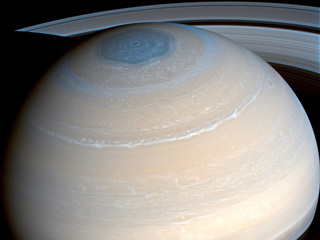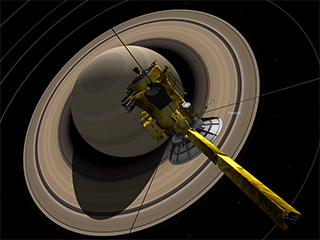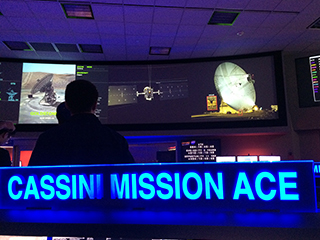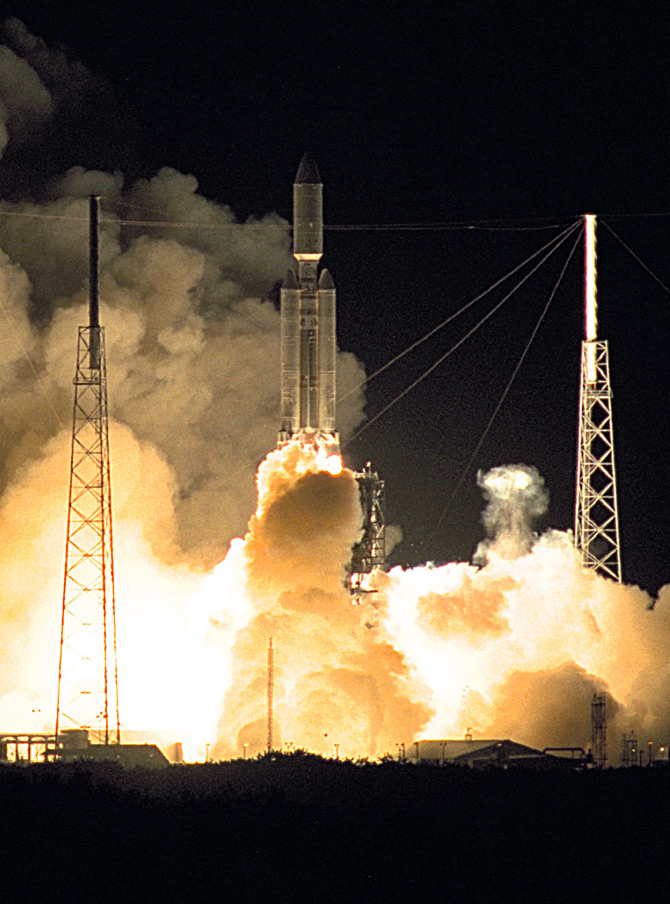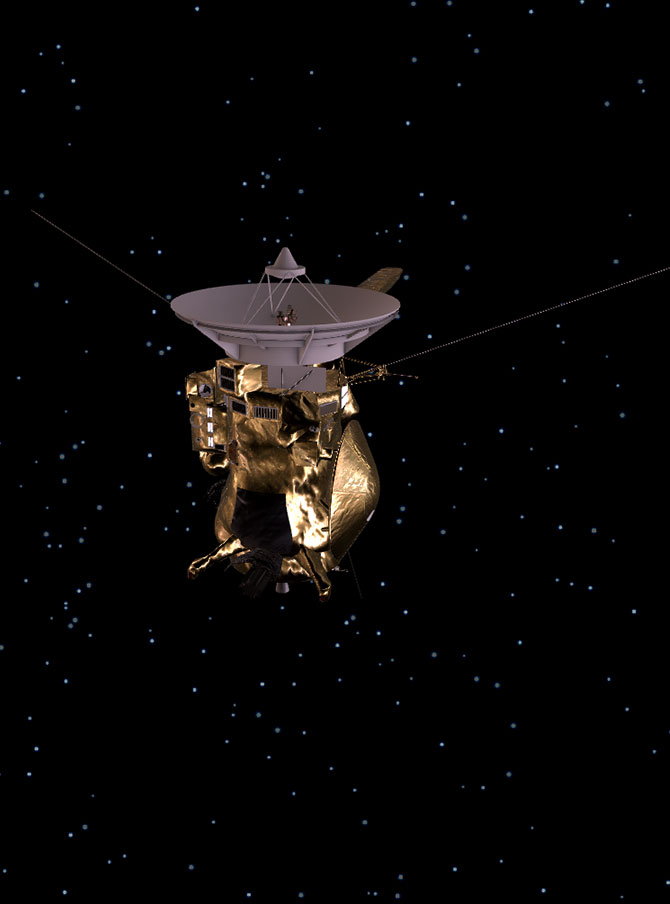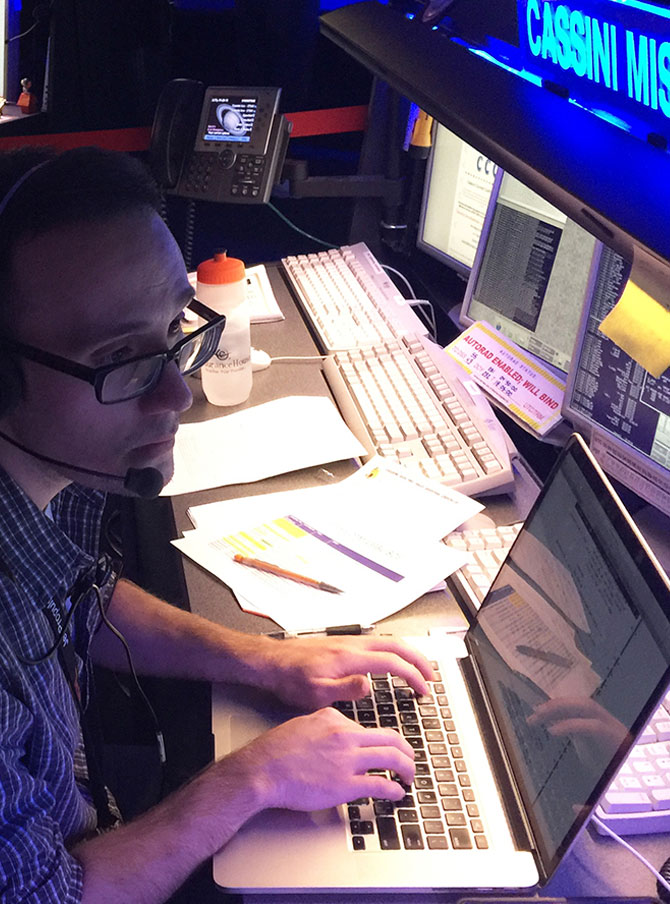To help visualize the dramatic final chapter in Cassini's remarkable story, NASA's Jet Propulsion Laboratory produced this short film that features beautiful computer-generated animation, thoughtful narration and a rousing score. Producers at JPL worked with filmmaker Erik Wernquist, known for his 2014 short film "Wanderers," to create a stirring finale video befitting one of NASA's most successful missions of exploration.
Wernquist's signature animation style uses real images from space missions as a starting point, which gives the resulting animations an uncanny authenticity. In addition, the vistas he creates have an uncommonly powerful sense of scale that conveys the vastness of the planetary locales NASA spacecraft have visited.


Real Inspiration
About the Visuals
Together, the team realized it was not enough to merely depict Cassini's Grand Finale dives between the planet and the rings. From a storytelling perspective, viewers needed to see where Cassini had been on its journey, the heights it had reached as it explored Saturn, in order to give the mission's finale and final plunge into Saturn the emotional impact they warranted. Hence, the two parts of the film, showing Cassini's history and Grand Finale.
The video's visuals are not only stunning — they're based on the real sights of Saturn. Each scene in the film attempts to faithfully re-create actual vistas you could see if you paid an in-person visit to Saturn, its rings and moons. For example, consider the following stills from the video, compared with actual images captured by NASA's Cassini spacecraft during its years in orbit around Saturn.
Saturn’s North Pole and Intriguing Hexagonal Jet Stream
Here we see Cassini descending toward the gap between Saturn and its rings.
Now for a real picture. NASA’s Cassini spacecraft swung high above Saturn to reveal this stately view of the golden-hued planet and its main rings. It’s part of a mosaic that was made from 36 images obtained by Cassini's imaging science subsystem on Oct. 10, 2013. See further details: https://saturn.jpl.nasa.gov/resources/5911/
Saturn Backlit by the Sun
In this shot, Cassini crosses the face of Saturn just as the giant planet eclipses the sun, providing a view never possible from Earth: the majestic rings lit up from behind.
Cassini really did witness such scenes, and on some occasions its cameras caught it. This striking mosaic was captured on July 19, 2013.
Even more remarkable is the fact that you are in this photo. Near the rings to the right of the planet, a pale blue dot can be seen — the Earth. Learn more: https://saturn.jpl.nasa.gov/ resources/5868/
Saturn Orbit Insertion
It was a tense moment in July 2004 when Cassini fired one of its main engines in order to slow down enough to be captured by Saturn's gravity, a moment seen in the video.
All went well, and the spacecraft was able to begin its tour of the Saturn system, allowing its cameras to record views like this one on Dec. 22, 2005. Details: https://saturn.jpl.nasa.gov/resources/2914/
Phoebe
Even before it entered orbit, Cassini passed close by Saturn's small moon Phoebe on June 23, 2004.
Phoebe shows an unusual variation in brightness over its surface due to the existence on some crater slopes and floors of bright material — thought to contain ice — on what is otherwise one of the darkest known bodies in the solar system, as seen in this mosaic of photos taken on June 23, 2004. This image has been brightened somewhat to bring out Phoebe's surface features. Details: https://saturn.jpl.nasa.gov/resources/1911/
The Seas of Titan
One of the most important stops on any tour of the Saturn system is Titan. Not only is Titan a giant of a moon (larger than the planet Mercury and the only moon with its own thick atmosphere), it's the only place in the solar system besides Earth to host bodies of liquid on its surface. Titan is much too cold for liquid water. Instead, seas of liquid hydrocarbons, filled by methane rains feeding rivers of methane, collect near the north pole of Titan. Cassini even managed to catch the sun glinting on one of these frigid seas.
Here's one of the actual images showing this phenomenon in action, taken Dec. 17, 2009. Details: https://saturn.jpl.nasa.gov/resources/4777/
The Jets of Enceladus
Perhaps the most surprising discovery of the entire Cassini mission is the fact that Saturn's moon Enceladus hides an ocean of liquid water beneath its icy shell. Scientists were stunned to see the little moon continually vents water from that underground ocean into space with immense geyser eruptions. On several occasions, Cassini even flew right through the plume from the jets, sampling its intriguing mix of water and other chemicals.
In this real image from Cassini, backlighting from the sun spectacularly illuminates Enceladus' jets of water ice. Details: https://saturn.jpl.nasa.gov/resources/6074/
Ring Diving
In a fittingly dramatic end to an extraordinary mission, Cassini's final orbits will take the spacecraft right into the gap between the Saturn and the rings.
No spacecraft has attempted this before. This is unexplored territory, and there are no pictures of this zone — yet. But it might look something like this lovely view that Cassini took in on Aug. 12, 2009. More: https://saturn.jpl.nasa.gov/resources/4661
Filmmaker's Thoughts
Upon completing the film, Wernquist wrote:
"This has been such an unprecedented honor, to get the chance of adding a piece to the official story of the Cassini-Huygens mission. As I was born in 1977, I had already missed the Apollo era, and was too young to grasp the Voyagers on their Grand Tour. But as I grew up, learning of all those great explorations from the past, Cassini became the first of the epic explorers I could follow all the way from launch -- through two decades -- and now all the way to the end. Cassini-Huygens is the one mission -- more than any other -- to define my interest and passion for planetary exploration and astronomy. To be able to join in and help wave goodbye to this extraordinary spacecraft is something I still cannot fully grasp the magnitude of."
Note: As with other NASA videos, permission is not required for use of this product.




